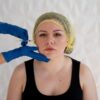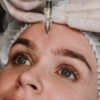- 79 Station Ln, Hornchurch, RM12 6JU
- 01708 607930
- info@charismabeautylounge.co.uk
- Home
- About Us
- Service
- Massage Services
- Threading
- Facial Waxing
- Eyebrow and Eyelash Tinting
- Eyelashes
- Body Waxing
- Manicures & Pedicures
- OPI Gel Paint / Shellac Services
- Dermalogica Facials Services
- Microneedling
- Microblading And Ombre Brows
- Exosome Treatment
- Dermal & Lip Fillers
- Botox Anti-Wrinkle Injections
- Skin Boosters
- Polynucleotide Treatment
- Our Pricing
- Blog
- Contact

LATEST POST









